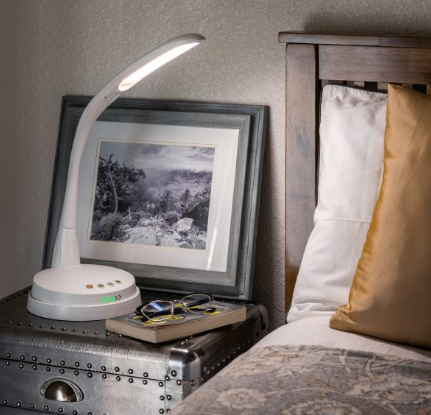What Is Acceptable Heat on Led Task Lamp

LED task lamps have quickly become popular for providing efficient and focused lighting in various settings – from offices to study spaces. A common challenge among users when purchasing an LED task lamp is understanding acceptable heat levels compared to incandescent bulbs; though LED bulbs tend to produce much lower levels of emissions due to energy conservation.
Nevertheless it remains essential that users understand when heat levels may become uncomfortable for an LED task lamp and whether additional measures might be required to keep its temperatures comfortable or when precautions should be taken when necessary.
LED task lamps offer one of the greatest advantages over conventional incandescent bulbs: reduced heat output. Traditional incandescents produce light by heating a filament, which wastes significant amounts of energy as waste heat; by contrast, LEDs work on an entirely different principle and convert electrical energy more efficiently and produce much less waste heat in their operation.
Under normal operating conditions, LED task lamps should emit very minimal heat. Most of the energy consumed by an LED is converted to visible light while only a minor percentage becomes heat, making these lights not only energy-efficient but safer as they decrease risk for burns or discomfort associated with prolonged heat exposure.
Acceptable heat levels for an LED task lamp depend upon individual preferences and lamp designs, with acceptable temperatures typically falling within manufacturer-specified guidelines. An optimally functioning task lamp should remain cool to the touch during use; otherwise it could signal malfunction or design flaw.
Multiple variables can impact the heat output of an LED task lamp. One key consideration is its internal components – specifically its LED driver and heat sink – with quality models featuring built-in heat sinks designed to dissipate excess heat produced during operation, helping maintain stable temperatures while prolonging LED lifespan.
Users must always keep the environment of an LED task lamp in mind when using it. Placing it in an enclosed space or conditions that restrict proper ventilation could increase heat production, while being exposed to high ambient temperatures could compromise performance of their lamp.
If your LED task lamp emits sudden bursts of heat or becomes excessively warm during use, or emits excessively high levels of heat overall, it is wise to turn it off immediately and allow it to cool. Long exposure to high temperatures could compromise its performance as well as pose safety threats – thus warranting shutoff to allow cooling.
LED technology helps ensure acceptable heat levels for an LED task lamp are typically low, due to its efficient design. While normal operation of an LED lamp produces some minimal amounts of heat during operation, any significant amounts should be investigated further to ensure its proper function and user safety. Understanding your task lamp’s behavior and design will allow for creating an optimally illuminated workspace without compromising safety or efficiency.
